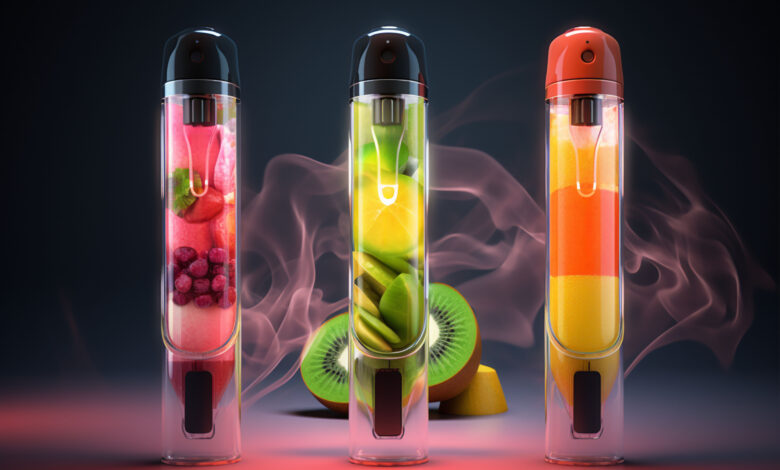
The vaping landscape in the UK has seen rapid growth and transformation over recent years. As more individuals turn to vape kits—whether disposable kits for convenience or reusable kits for a sustainable option—the importance of understanding the associated regulations becomes paramount. E-liquids, integral to this experience, are not just about flavor; they are governed by strict guidelines designed to protect consumers and ensure safety. For both seasoned vapers and newcomers alike, navigating these rules can be daunting but is essential for enjoying your vaping journey responsibly. Let’s dive into what every vaper should know about UK e-liquid regulations.
The Importance of Regulations in the Vaping Industry
Regulations in the vaping industry play a crucial role in safeguarding public health. As more individuals turn to vaping, ensuring that products are safe and reliable becomes paramount.
With a diverse range of vape kits flooding the market, regulations help maintain quality standards. They ensure that manufacturers adhere to strict guidelines when producing e-liquids, which can contain various ingredients.
These rules also protect consumers from misleading marketing tactics. Clear regulations promote transparency about nicotine levels and flavoring agents used in disposable and reusable vape.
Furthermore, well-defined laws create a level playing field for businesses. This encourages innovation while prioritizing customer safety above all else.
In essence, effective regulation fosters trust within the vaping community, allowing users to enjoy their experience without compromising health or safety.
Key Components of UK E-Liquid Regulations
UK E-Liquid regulations are designed to ensure safety and quality. The rules govern various aspects of e-liquids, from their ingredients to packaging.
One key component is the limitation on nicotine content. E-liquids cannot exceed 20mg/ml of nicotine. This helps mitigate health risks associated with higher concentrations.
Manufacturers must also adhere to strict ingredient restrictions. Certain harmful substances like diacetyl are banned, ensuring a safer vaping experience for users.
Another important aspect involves product testing and quality standards. Before any e-liquid hits the market, it must undergo rigorous tests to confirm its safety and compliance with established guidelines.
Manufacturers need to maintain transparent records about their products. This includes detailed information on formulations and production processes, making it easier for regulators to oversee what enters the market.
Restrictions on Ingredients and Manufacturing Processes
UK regulations impose strict limitations on the ingredients used in e-liquids. This ensures that vapers are not exposed to harmful substances. For example, certain flavorings and additives are banned due to safety concerns.
Manufacturers must also adhere to rigorous manufacturing processes. This includes maintaining high hygiene standards during production. Cleanliness is vital for preventing contaminants from affecting product quality.
Moreover, nicotine concentrations in e-liquids are regulated. The maximum allowable strength is capped at 20mg/ml, ensuring a safer experience for users across different types of vape kits.
Testing and quality assurance play crucial roles too. Regular assessments ensure that products meet established safety criteria before reaching consumers’ hands. These measures protect public health while fostering trust within the vaping community.
Understanding these restrictions helps vapers make informed choices about their preferred disposable vapes or reusable options.
Labeling Requirements for E-Liquids in the UK
Labeling for e-liquids in the UK is crucial. It ensures that consumers have access to necessary safety information and product details.
Each bottle must clearly state its nicotine content, providing users with vital data about what they are inhaling. This transparency empowers vapers to make informed choices.
Additionally, labels must include a list of ingredients used in the formulation. This allows consumers to identify any potential allergens or substances they may wish to avoid.
Another important aspect is warning labels. These need to be prominently displayed, highlighting risks associated with nicotine consumption.
Compliance not only protects users but also enhances trust between manufacturers and customers. Vaping enthusiasts should always check these labels before purchasing vape kits or disposable kits to ensure safety and quality standards are met.
Impact of Brexit on E-Liquid Regulations
Brexit has brought significant changes to various sectors in the UK, and the vaping industry is no exception. The departure from the EU means that regulations governing e-liquids may evolve, leading to potential discrepancies with previous EU standards.
One immediate effect is the uncertainty surrounding ingredient sourcing. Manufacturers must now navigate a more complex landscape when it comes to compliance. This could impact both cost and availability of certain vape kits.
Additionally, businesses might face new tariffs or trade barriers on imported components. These changes can affect everything from disposable kits to reusable options, influencing prices for consumers.
Consumer safety remains a top priority, but how these regulations adapt over time will be crucial for maintaining quality across products on the market. With evolving guidelines, vapers should stay informed about any shifts that may arise as this regulatory landscape continues to unfold.
Tips for Consumers to Ensure Compliance with Regulations
When choosing vape kits or disposable kits, always look for reputable brands. Research their manufacturing practices and ingredient sourcing to ensure they meet regulatory standards.
Pay attention to the labeling on e-liquids. Labels should clearly list ingredients, nicotine content, and any relevant warnings. This information is crucial for safe consumption.
Keep an eye out for third-party testing results. Many compliant brands publish lab results that verify their products are free from harmful substances.
Stay informed about changing regulations in the vaping industry. Follow trusted sources online to keep up with new developments that might affect your choices.
Consider joining local vaping communities or forums where members share insights and experiences regarding compliance issues. Engaging with others can help you navigate this evolving landscape more effectively.
Conclusion
Understanding the regulations surrounding e-liquids in the UK is crucial for anyone who vapes. These rules not only ensure safety but also maintain a standard of quality across the industry. With the variety of vape kits available—from disposable kits to reusable options—being informed helps you make better choices.
The restrictions on ingredients and manufacturing processes are designed to protect consumers from harmful substances while promoting safe practices among manufacturers. Knowing what’s in your e-liquid can significantly impact your vaping experience and health.
Labeling requirements further empower consumers by providing essential information about what they’re inhaling, enabling more informed decisions when selecting products. As the market evolves, particularly with changes stemming from Brexit, staying updated on these regulations becomes even more vital.
For those looking to ensure compliance with these rules, it’s wise to purchase from reputable vendors who adhere strictly to UK standards. This approach guarantees that you’re using high-quality vape kits and e-liquids that meet all necessary guidelines.
Knowledge is power in this vibrant community of vapers. By understanding UK e-liquid regulations, you can enjoy peace of mind while indulging in your favorite flavors safely and responsibly.





